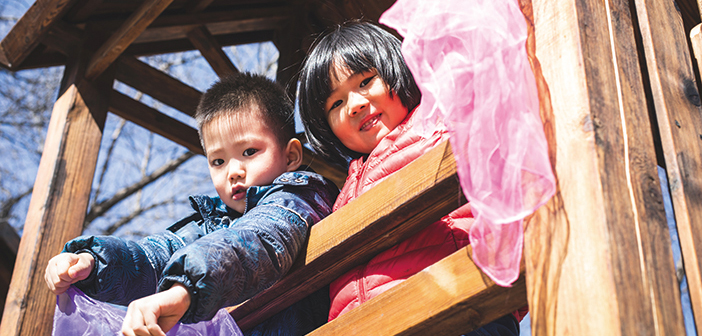Bringing up kids can be a challenge at times, with so many conflicting theories about every aspect of their lives: from diet and sleep to learning and behavior management. However, there is one aspect of parenting about which we can be absolutely certain: children need to play outside.
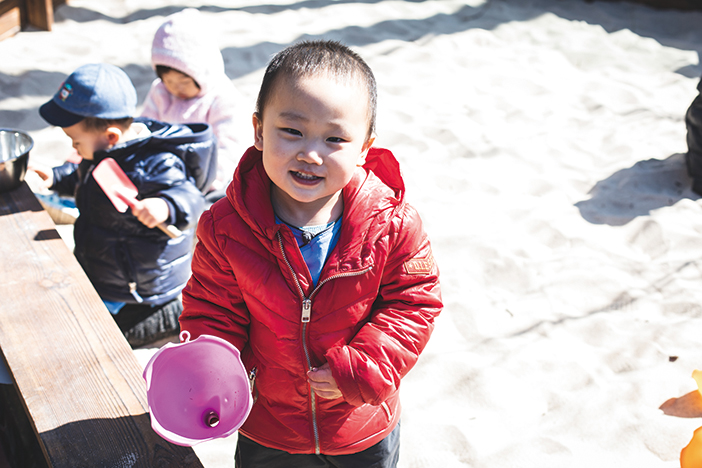
Play is how children learn, and free play is necessary for the development of cognitive, motor, and social skills. There is also a huge and growing body of research that shows that being in natural sunlight and a green environment is essential, not only to physical factors such as stronger bones and immune systems, but also to confidence, happiness and the ability to focus. Recently scientists have discovered a link between myopia (near-sightedness) and inadequate exposure to sunlight, and the epidemic of obesity in young people across the world has been in part attributed to lack of outdoor exercise.
But if playing outside is so important, why do our kids spend so much time indoors? Any parent can list the myriad of barriers: the hazards of increasing road traffic, the fear of “stranger danger”, the disappearance of public areas and green space in our cities, and perhaps most of all the competing demands of video games and social media. In Beijing, there are additional challenges, in the form of air pollution, and a culture of academic competition and excessive homework.
So with spring now blooming across the city, how can parents get their kids out into the fresh air and sunshine? We talk to educator and outdoor play expert Sabine Maiberger to get some tips.
Maiberger has been a teacher for 26 years, first in her home country of Germany, then in Finland – both places with a strong outdoors culture. She came to Beijing in 2011 to head the German Embassy School’s Early Childhood Center and now runs her own kindergarten with her husband, at a suburban location near the Summer Palace. At WonderTree, she tells us, nature is a very important part of the curriculum.
“Our approach is called INSPIRED, with the N standing for both Nature and Nurture,” she told us. “We aim to create a community of co-learners, integrating the environment, culture, parents, and educators. Our kindergarten has 1,800 square meters of outdoor space, with no fake grass. There’s some rubber flooring for safety, but otherwise, it’s grass and trees and bushes, with a sandbox and water, things to climb on, and a wooden house for roleplay. We have an outdoor classroom, so the kids can do writing, painting, and so on in a natural environment. We even have toilets outside so they don’t have to come inside. We play at least two hours every day with the children.”
What sort of games can children play outside?
When we think of outdoor play, we probably imagine sports, or running and hiding games. But Maiberger encourages us to think of all different forms of play taking place in a natural environment.
“There’s creative play, dramatic play, roleplay, such as playing mother and father, or cooking. There’s constructive play, for example using wooden blocks … co-operative play and imaginative play, where children go into stories, which is linked to social and emotional play. And of course, there’s physical play, with different activities developing different gross motor skills.”
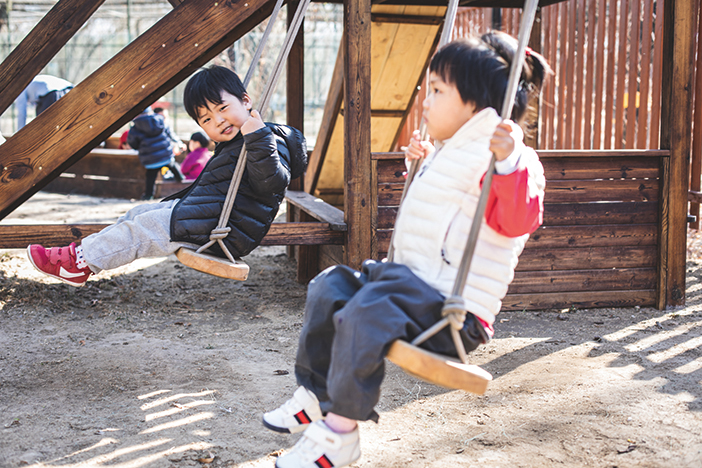
Where can kids play outdoors in Beijing?
In a big city with heavy traffic like Beijing, it may seem that it’s difficult for children to play safely outside. But Maiberger swiftly dismisses such concerns.
“In Beijing, there is a park every couple of kilometers,” Maiberger says. “Many compounds have a park; there are a lot of spots you can discover with your child. If not, you can always go out to the nearby hills for a hike. There are lots of opportunities in this city.”
How can parents get their children playing outside?
“A nature walk is a really good start,” says Maiberger. “You can take an empty shoebox or bag, and the kids can just collect whatever they like to collect, or you can give them tasks. Older kids like to go on a treasure hunt!
“This is not to mention free play. It’s important that kids can choose where, what, and with whom they play. Of course, we observe, but we need to encourage children to take risks, to climb, and balance. As parents, you can be with them, let them know you’re there, but let them learn confidence and competence on their own.”
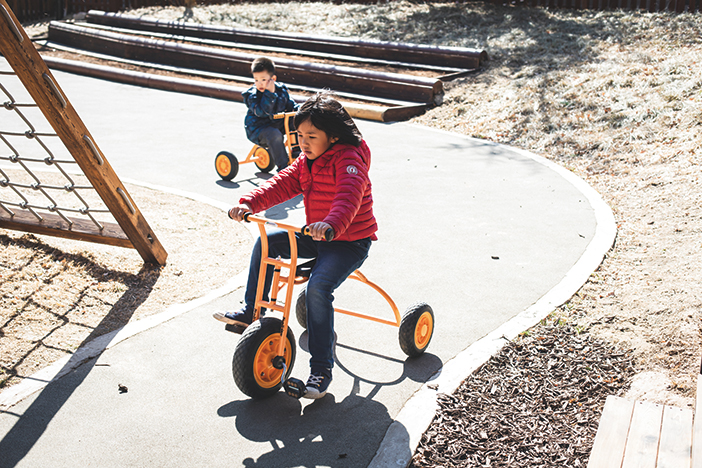
How can parents encourage reluctant kids, especially older kids and teens who just want to play video games?
“What I’ve observed,” Maiberger says, “is that very often parents just say ‘Go outside, it’s good for you,’ but the parents stay inside. Being outside with them makes a huge difference. Parents very often just put the kids into an afterschool program, so actually being with the child and going outside, playing with a ball and jumping rope, running and laughing… that’s really important.
“If they’re older kids you can talk to them as parents, find out where their interest is and put time into it. All children are curious nature learners, but we kill it through the media or the education system. However, I have hope that if we nurture it, children will get their motivation back.”
What about when the weather is bad?
“I used to work in Finland,” Maiberger says, “where we had a saying: there is no bad weather, only bad clothes! We go outside when it’s snowing, it’s totally important and the kids love it. I’ve observed in China that when it’s rainy, snowy, or cold, you don’t go out. But children need to experience all seasons, it’s crucial for their social and emotional development. It seems funny to me to teach children about snow when it’s not snowing, or about rain with flashcards. Our policy is that if it’s down to minus 15 degrees Celsius we stay in, but otherwise, wind or rain, we go out.”
We ask Maiberger about appropriate clothing for outdoor play.
“No ballerina dresses!” she says. “If children are uncomfortable or cannot really move, that also affects their physical and emotional development. And not open shoes, they should wear trainers. In winter time it’s very important that they wear a hat, and gloves with individual fingers, not mittens. It’s good if they have another layer on top which they can take off if they get warm, and clothes they can get dirty in, so not white, for example. It doesn’t help if I have to say be careful in the sandbox!”
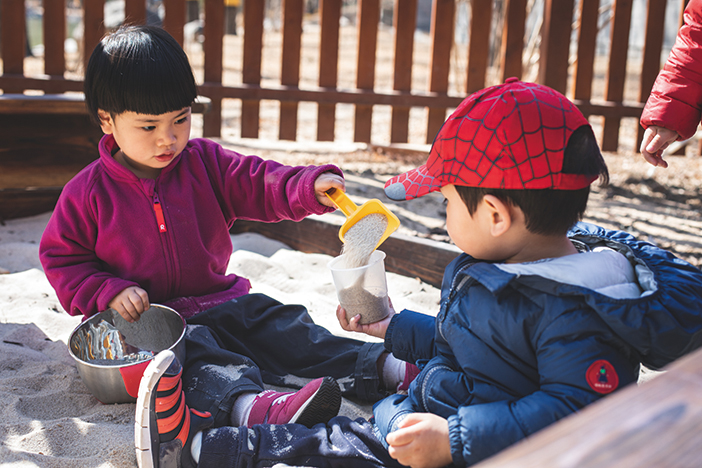
Why is it important that children interact with the natural environment?
“People say children are the future, but they can’t be the future if we don’t live as role models. Kids imitate what they see, and they need to see us doing things like composting and recycling. At WonderTree we’ve started them composting, and learning to garden. They each have their own box to grow things.
“It’s also about mindfulness and awareness. When we go for a nature walk, sometimes we just stand in the sun, noticing how the sunlight feels on our faces. This is more important nowadays than ever. We are getting more and more disconnected from nature; in Beijing, everything is asphalt and stone. I believe that what you appreciate and love you want to protect and maintain. We need to immerse children in nature, so they will appreciate and protect it. Otherwise, there will be no future. Without nature, we cannot live.”
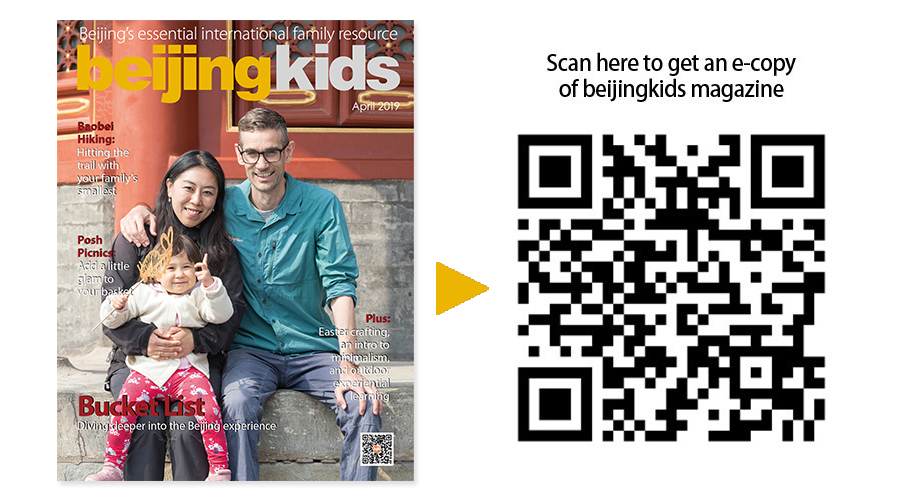
This article first appeared in the beijingkids April 2019 Exploring Beijing issue.
Photos: Uni You

